594 words
3 minutes
空气质量在线检测分析平台
use Charles/Fiddler to capture packet. they are merged by multiple pages. copy the url to search bar.
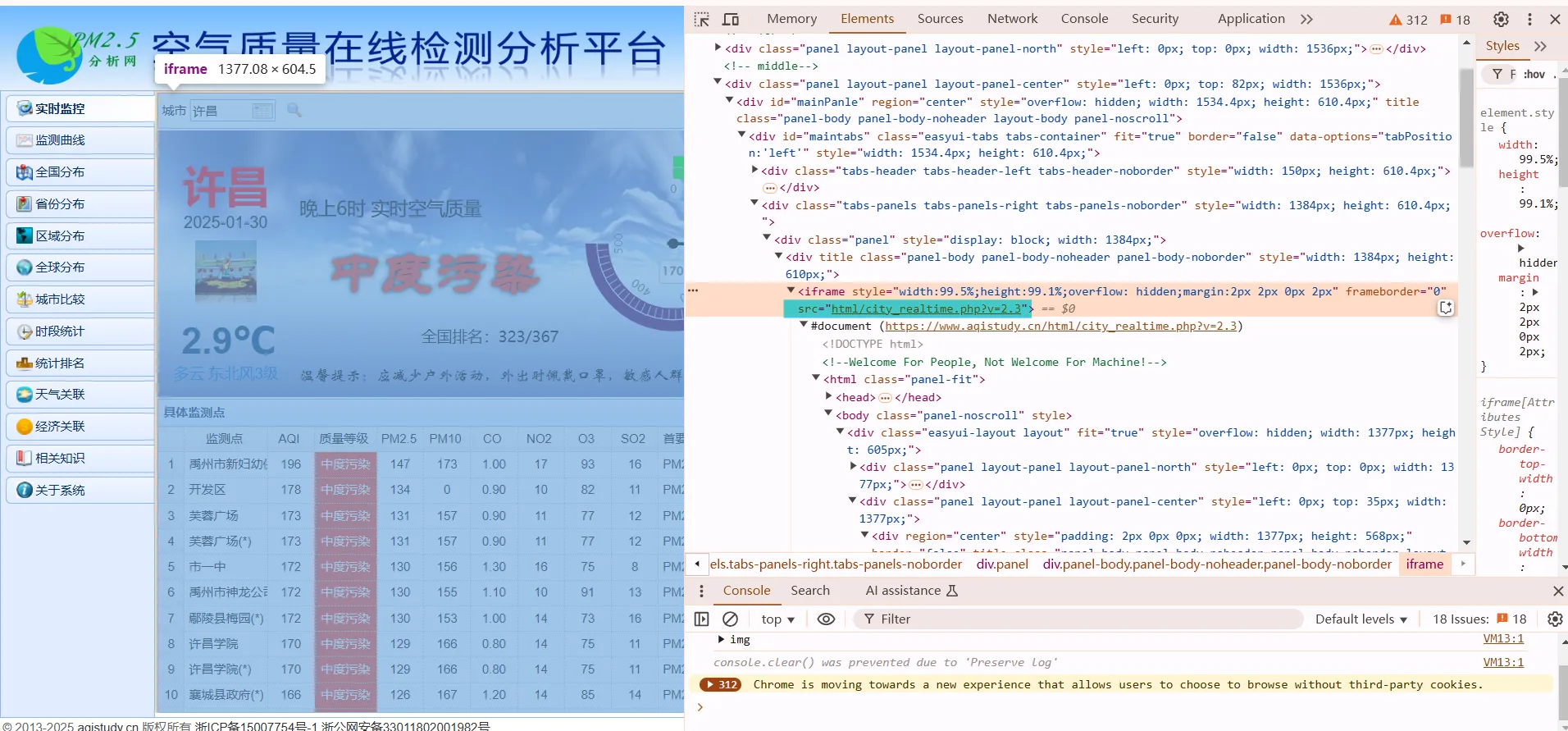
https://www.aqistudy.cn/html/city_realtime.php?v=2.3
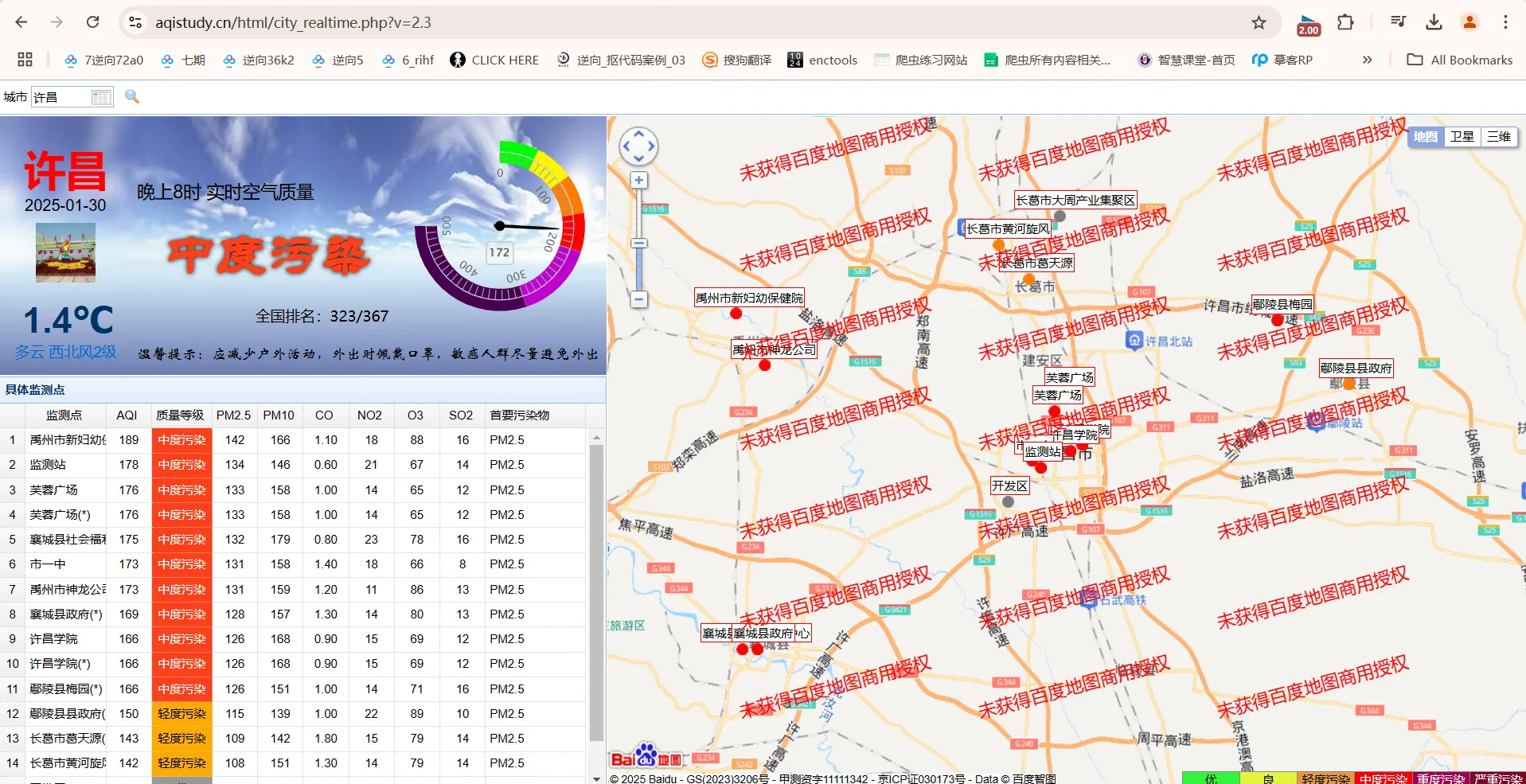
enter the target page so we don’t need to deal with infinite debugging twice.
it means its jquery
![]()
bypass infinite debug
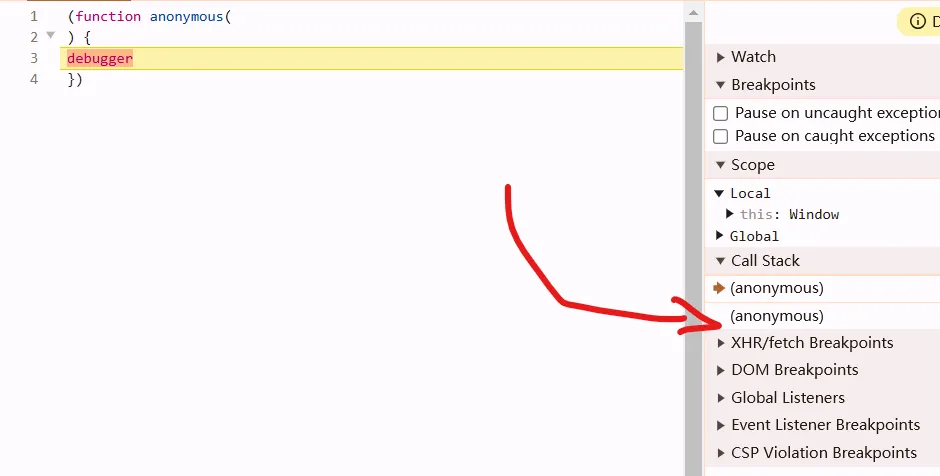
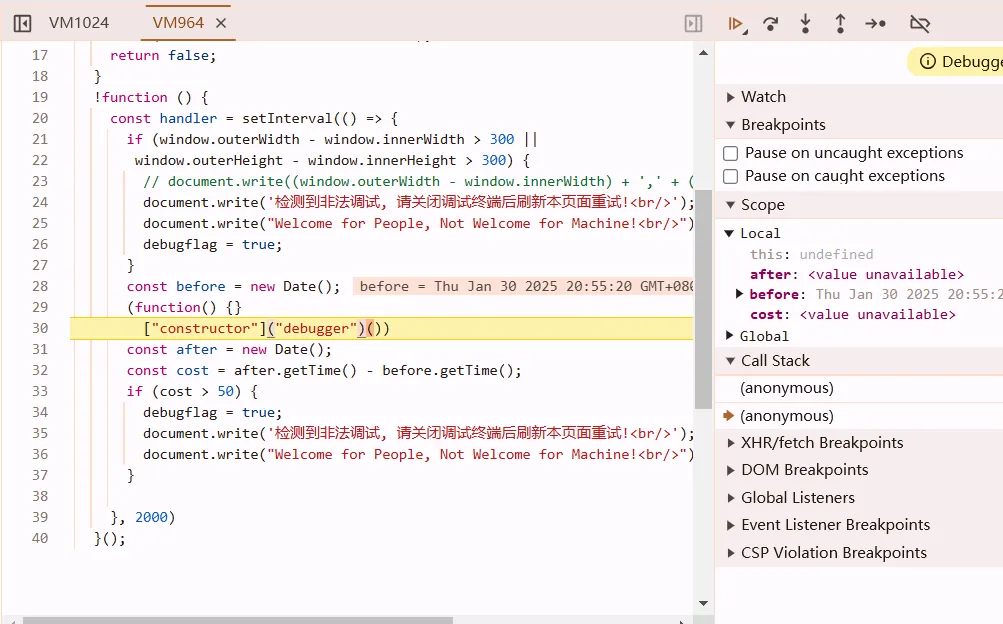
a VM js file may come from eval or Function, use hook to locate it. it loads so many js,
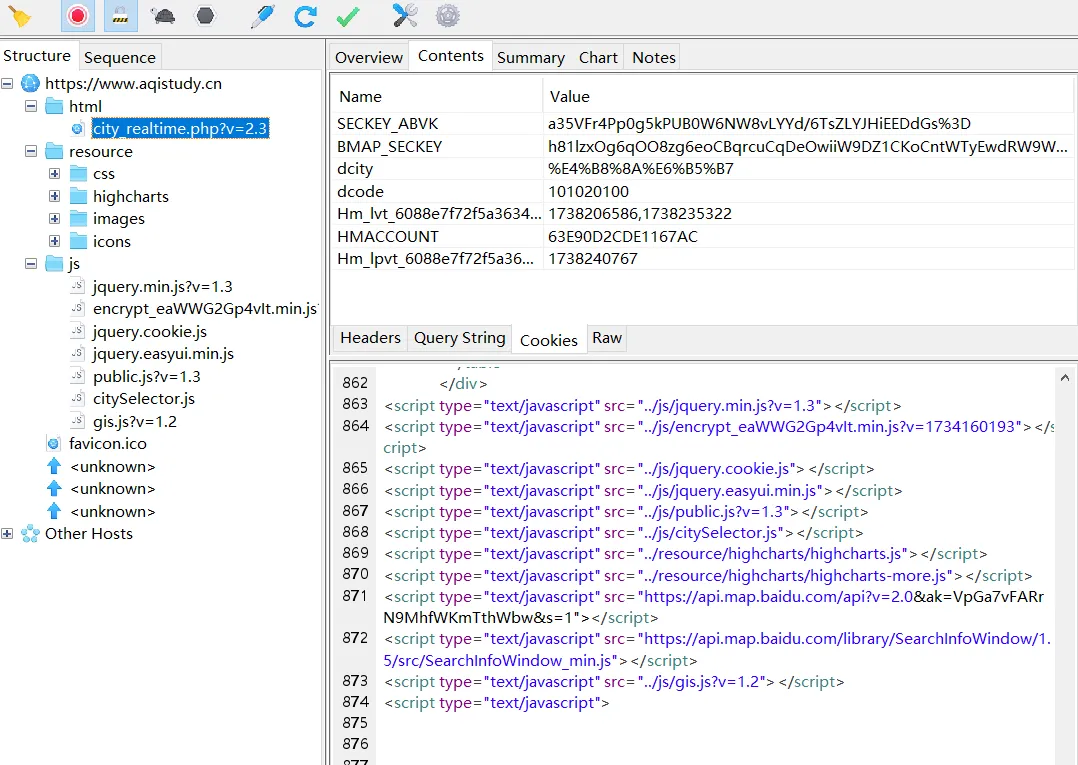
add this snippet to hook
var eval_ = eval;
eval = function() {
debugger;
return eval_.apply(this, arguments);
};
refresh, it do nothing with VM
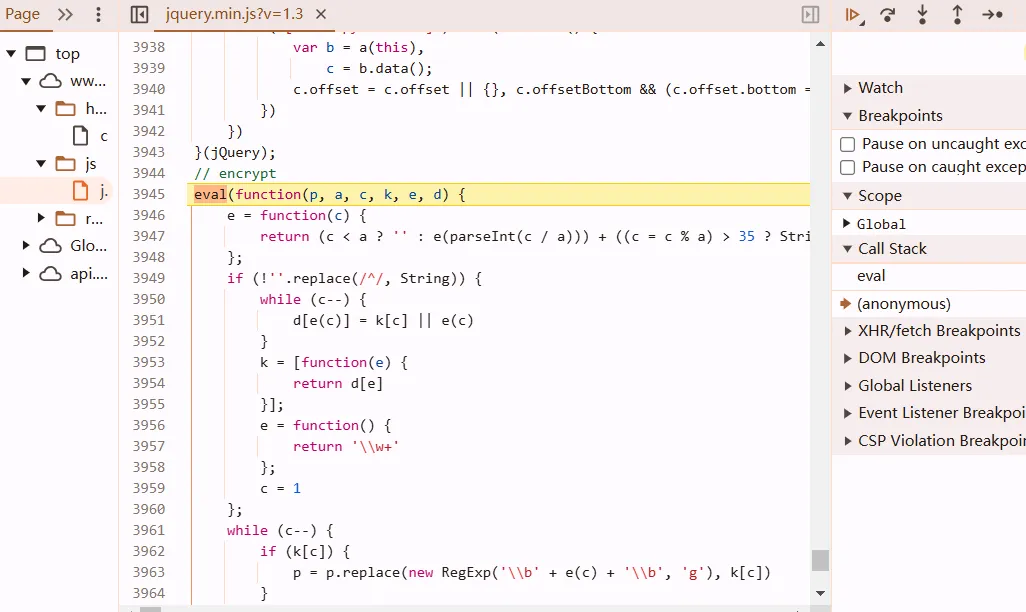
type arguments[0] to see its function. type it when the breakpoint is at eval

let it go until you find the right place
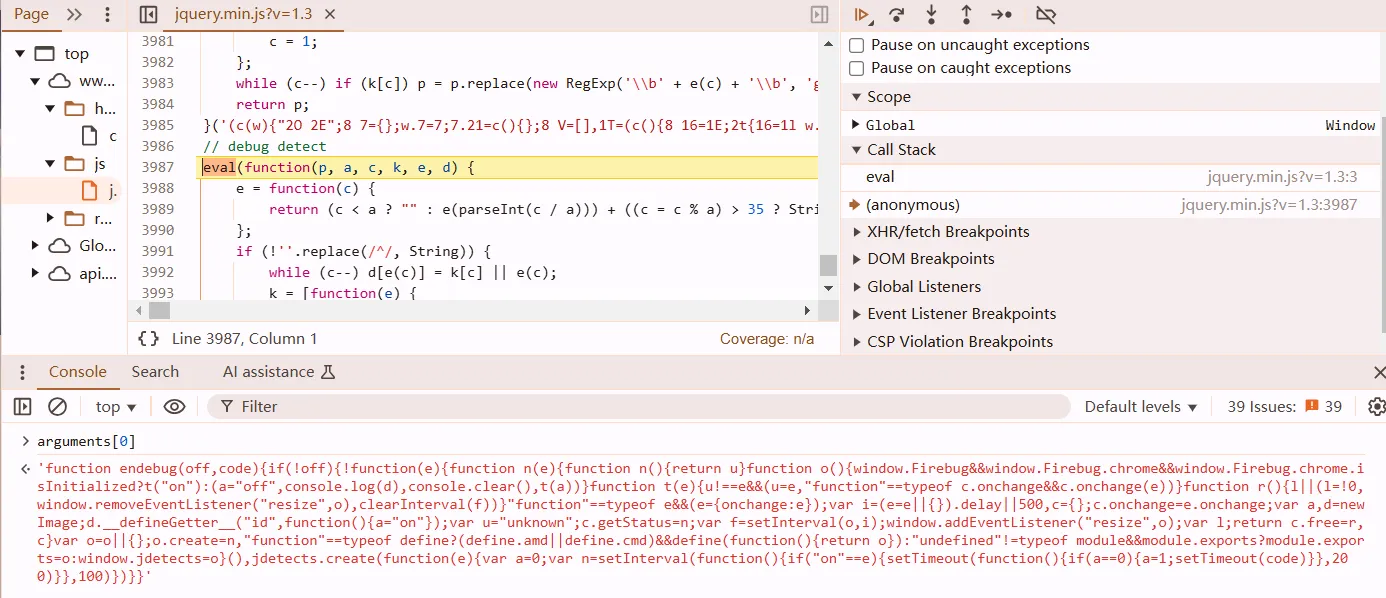
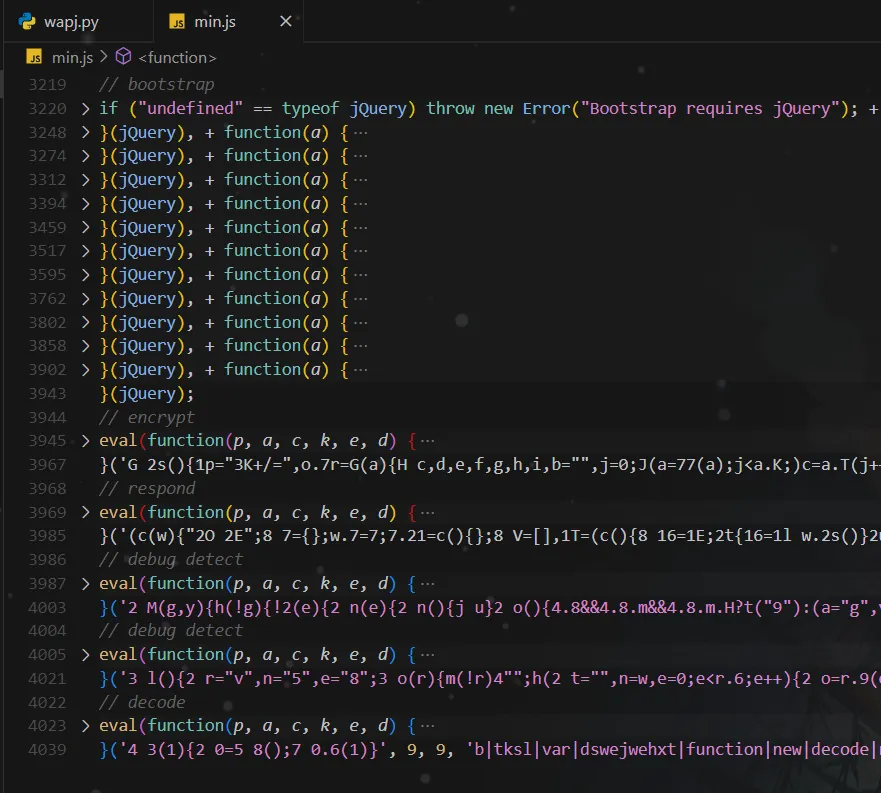
comment them. but we still meet infinite debug. find back
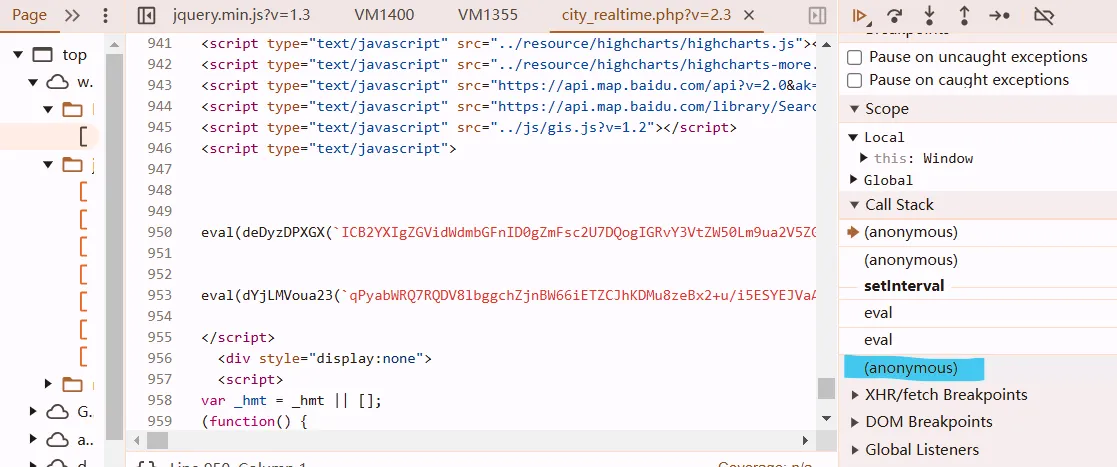
comment the first eval, over
h1zlb1QoZ encrypt
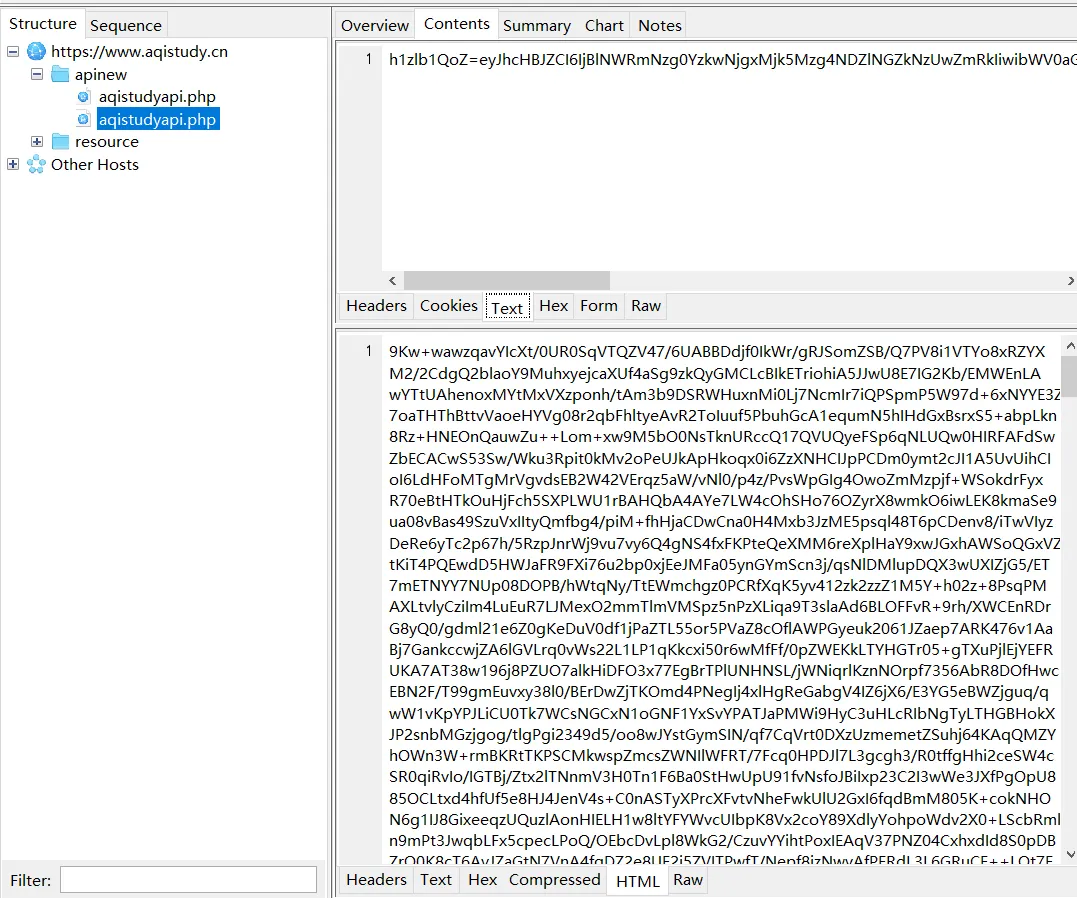
By examining the initiator, one can easily locate the position of the function.
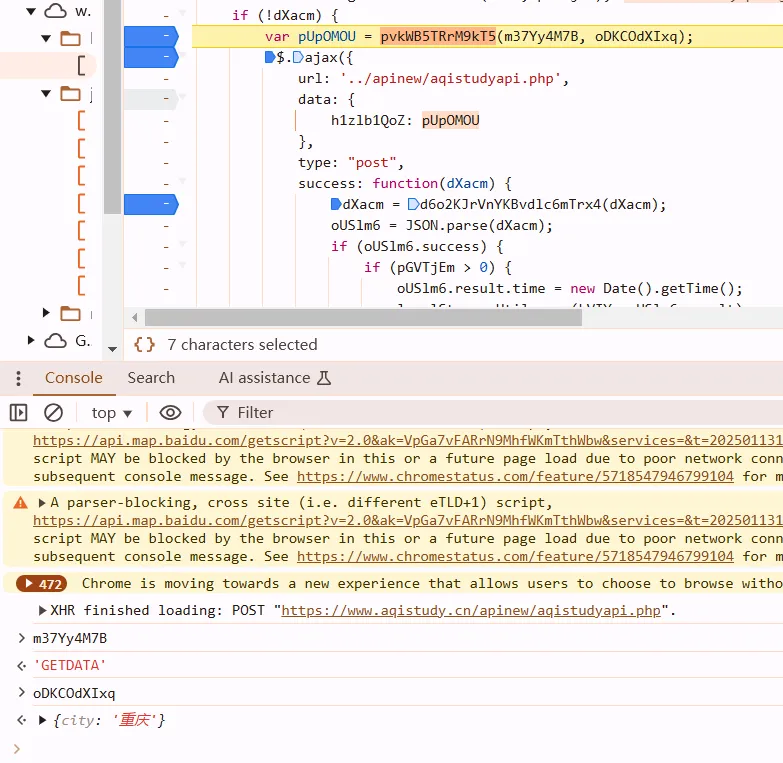
return function(method, obj) {
var appId = '0e5df784c9068129938846e4fd750fdd';
var clienttype = 'WEB';
var timestamp = new Date().getTime();
var param = {
appId: appId,
method: method,
timestamp: timestamp,
clienttype: clienttype,
object: obj,
secret: hex_md5(appId + method + timestamp + clienttype + JSON.stringify(ObjectSort(obj)))
};
param = BASE64.encrypt(JSON.stringify(param));
return param
}

js2py
import json
import time
import hashlib
import base64
def hex_md5(s):
# Calculate the MD5 hash of a string and return it as a hex string
return hashlib.md5(s.encode('utf-8')).hexdigest()
def generate_param(method, obj):
app_id = '0e5df784c9068129938846e4fd750fdd'
clienttype = 'WEB'
timestamp = int(time.time() * 1000) # Current time in milliseconds
# Create the secret by concatenating values and hashing with MD5
secret = hex_md5(
app_id + method + str(timestamp) + clienttype + '{"city":"上海"}' # change to 'city' causes false result
)
# Build the parameter dictionary
param = {
'appId': app_id,
'method': method,
'timestamp': timestamp,
'clienttype': clienttype,
'object': obj,
'secret': secret
}
# Convert the parameter dictionary to a JSON string and encode it in base64
param_json = json.dumps(param, separators=(',', ':'))
param_base64 = base64.b64encode(param_json.encode('utf-8')).decode('utf-8')
return param_base64
# Example usage
method = 'GETDATA'
obj = {"city": "上海"}
result = generate_param(method, obj)
print(result)
扣代码
https://appl2m4pcpu3553.pc.xiaoe-tech.com/live_pc/l_6735c4e1e4b0694c94ff6449
decrypt
$.ajax({
url: '../apinew/aqistudyapi.php',
data: {
h1zlb1QoZ: pUpOMOU
},
type: "post",
success: function(dXacm) {
dXacm = d6o2KJrVnYKBvdlc6mTrx4(dXacm);
oUSlm6 = JSON.parse(dXacm);
if (oUSlm6.success) {
if (pGVTjEm > 0) {
oUSlm6.result.time = new Date().getTime();
localStorageUtil.save(kVIY, oUSlm6.result)
}
cA43Npnni(oUSlm6.result)
} else {
console.log(oUSlm6.errcode, oUSlm6.errmsg)
}
}
})
js2py
from Crypto.Cipher import AES, DES
from Crypto.Hash import MD5
import base64
def md5(key):
return MD5.new(key.encode()).hexdigest()
def aes_decrypt(text, key, iv):
secretkey = md5(key)[16:32].encode('utf-8')
secretiv = md5(iv)[:16].encode('utf-8')
cipher = AES.new(secretkey, AES.MODE_CBC, secretiv)
decrypted = cipher.decrypt(base64.b64decode(text))
return decrypted.rstrip(b'\0').decode('utf-8')
def des_decrypt(text, key, iv):
secretkey = md5(key)[:8].encode('utf-8') # fuck.
secretiv = md5(iv)[24:32].encode('utf-8')
cipher = DES.new(key=secretkey, mode=DES.MODE_CBC, iv=secretiv)
decrypted = cipher.decrypt(base64.b64decode(text))
return decrypted.rstrip(b'\0').decode('utf-8')
return cipher
def base64_encrypt(text):
return base64.b64encode(text.encode()).decode()
def base64_decrypt(text):
return base64.b64decode(text).decode('utf-8')
def d6o2KJrVnYKBvdlc6mTrx4(data):
data = aes_decrypt(data, "a5slhqEdLos7hvjr", "bhb9eTODiif32jv0")
data = des_decrypt(data, "hXenRdbrF1iqaMLr", "xAWozmps3eqYftMA")
data = base64_decrypt(data)
return data
扣代码
var CryptoJS = require("crypto-js");
var AES = {
decrypt: function(text, key, iv) {
var secretkey = (CryptoJS.MD5(key).toString()).substr(16, 16);
var secretiv = (CryptoJS.MD5(iv).toString()).substr(0, 16);
secretkey = CryptoJS.enc.Utf8.parse(secretkey);
secretiv = CryptoJS.enc.Utf8.parse(secretiv);
var result = CryptoJS.AES.decrypt(text, secretkey, {
iv: secretiv,
mode: CryptoJS.mode.CBC,
padding: CryptoJS.pad.Pkcs7
});
return result.toString(CryptoJS.enc.Utf8)
}
};
var DES = {
decrypt: function(text, key, iv) {
var secretkey = (CryptoJS.MD5(key).toString()).substr(0, 16);
var secretiv = (CryptoJS.MD5(iv).toString()).substr(24, 8);
secretkey = CryptoJS.enc.Utf8.parse(secretkey);
secretiv = CryptoJS.enc.Utf8.parse(secretiv);
var result = CryptoJS.DES.decrypt(text, secretkey, {
iv: secretiv,
mode: CryptoJS.mode.CBC,
padding: CryptoJS.pad.Pkcs7
});
return result.toString(CryptoJS.enc.Utf8)
}
};
var BASE64 = {
encrypt: function(text) {
var b = new Base64();
return b.encode(text)
},
decrypt: function(text) {
var b = new Base64();
return b.decode(text)
}
};
function d6o2KJrVnYKBvdlc6mTrx4(data) {
data = AES.decrypt(data, "a5slhqEdLos7hvjr", "bhb9eTODiif32jv0");
data = DES.decrypt(data, "hXenRdbrF1iqaMLr", "xAWozmps3eqYftMA");
data = BASE64.decrypt(data);
return data
}
function Base64(data) {
this.decode = function(data) {
return Buffer.from(data, 'base64').toString('utf-8');
}
};
var data = "9Kw+wawzqavYIcXt/0UR0SqVTQZV47/6UABBDd..."
console.log(d6o2KJrVnYKBvdlc6mTrx4(data));
